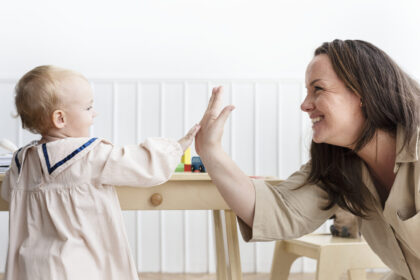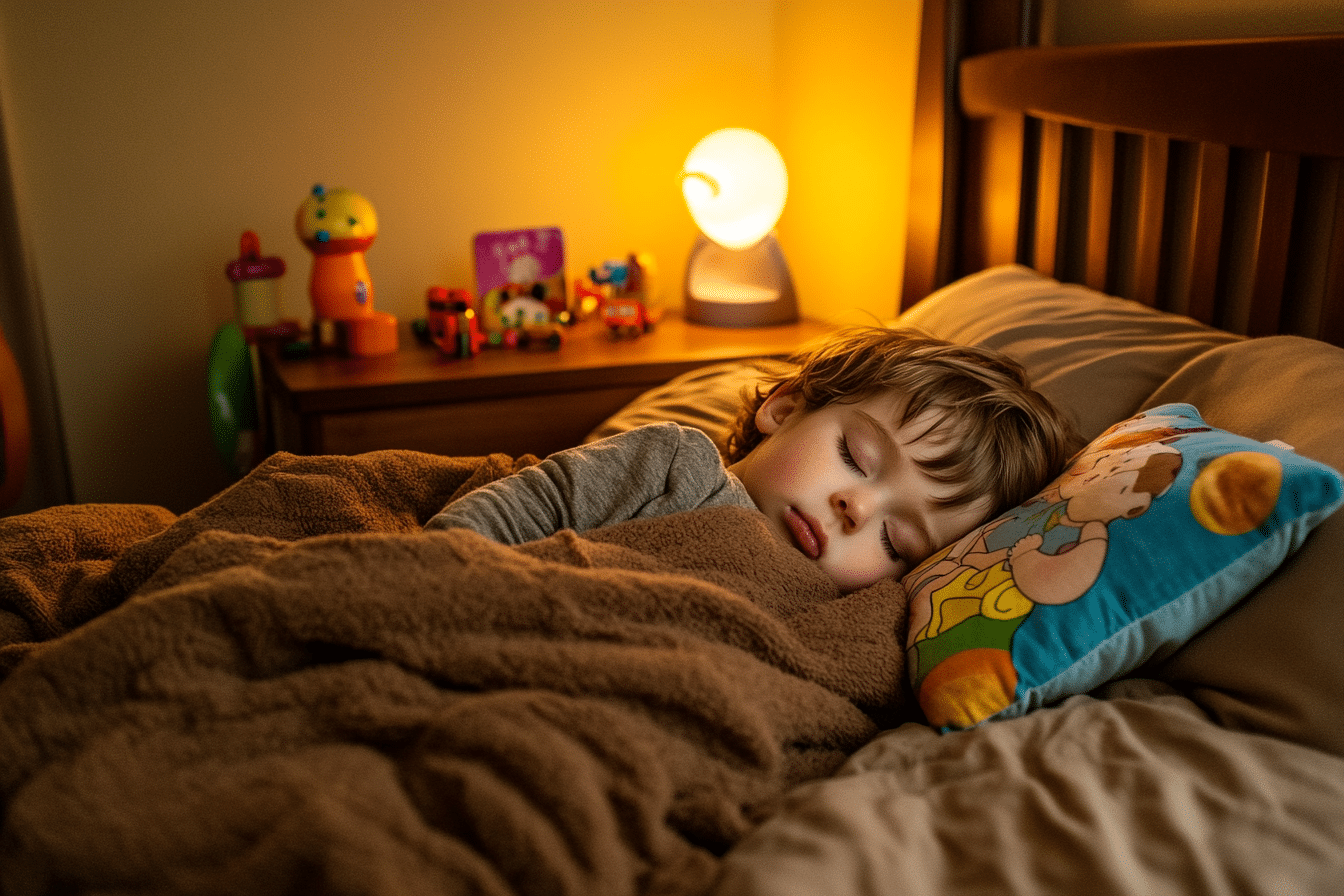In today's digital age, it's easy for toddlers to become captivated by the bright lights and interactive nature of screens. While technology can offer some educational benefits, it's crucial to prioritize screen-free play. Play is essential to a child's development, and it contributes to their cognitive, physical, social, and emotional well-being. This article explores the importance of play and provides a variety of screen-free activities that will keep toddlers entertained and engaged while fostering their development. The activities have been carefully selected and categorized based on research findings to offer a comprehensive guide for parents and caregivers.
The Importance of Play for Toddlers
Play is more than just fun and games; it's how young children learn and grow. It's been called “fireworks” for the brain because of the incredible impact it has on development. Through play, toddlers develop essential skills, including:
- Cognitive Skills: Problem-solving, creativity, critical thinking, cause and effect, and memory.
- Physical Skills: Gross motor skills (running, jumping, climbing), fine motor skills (grasping, manipulating objects), coordination, and balance.
- Social-Emotional Skills: Communication, cooperation, empathy, emotional regulation, self-esteem, and resilience.
- Language Skills: Vocabulary building, communication, and understanding language structure.
Play allows children to explore the world around them, experiment with new ideas, and learn about themselves. It also helps them develop a sense of mastery and confidence. In addition to these benefits, play is a valuable tool for helping toddlers cope with stress and build resilience. The joy and one-on-one interaction that occur during play can help manage the body's stress response.
It's important to provide toddlers with a balance of structured and unstructured play. Structured play is organized by adults, with the child following directions or rules to complete a task. Unstructured play, also known as free play, is child-directed, allowing them to explore their own interests and ideas. Both types of play support important aspects of a child's development.
When parents observe their children in play or join with them in child-driven play, they are given a unique opportunity to see the world from their child's vantage point. The interactions that occur through play tell children that parents are fully paying attention to them and help to build enduring relationships.
Sensory Activities
Sensory play is crucial for toddlers as it helps them explore the world using their senses. It stimulates brain development, encourages exploration and curiosity, and helps toddlers understand their surroundings. Here are some creative and engaging sensory activities for toddlers:
Water Play
- Water Table: Provide a water table with toys.
- Transferring Water with a Sponge: Use two buckets and a sponge.
- Splash Pad Sprinkler: Set up a splash pad.
- Water Pond: Use a small tray with water and floating toys.
- Pick the Balls Out with Your Feet: Use a bin with water and plastic balls.
- Kitchen Sink: Fill the sink with soapy water and toys.
- Ice Age: The Meltdown: Freeze small toys in ice.
- Water Station: Set up containers, cups, and toys.
- Sidewalk Painting: Use water and a paintbrush.
Texture Exploration
- Flour Sensory Trays: Spread flour on a tray.
- Flour and Water Dough: Combine flour and water.
- Sand Table: Fill a container with sand.
- Slimy Eyes Sensory Bag: Fill a bag with hair gel and googly eyes.
- Wet Paper Exploration: Provide a tub of water and paper.
- Edible Sandbox: Use crushed graham crackers and oatmeal.
- Cotton Ball Creativity: Fill a bowl with cotton balls.
- Bean Blanket Time: Spread dried beans on a blanket.
- Noodle Sensory Bin: Add dry noodles to a tub.
Sound and Music
- Rock Band: Make music with homemade instruments.
- Popcorn Senses: Engage all five senses with popcorn.
- Wave Bottle: Fill a bottle with water, oil, and food coloring.
- Fall Leaf Activities: Explore fall leaves.
- Foam Party: Use water, soap, and food coloring in a bin.
- Color Mixing: Use squeeze bottles with water and food coloring.
- Animal Rescue: Freeze animal figurines in ice.
- Shaving Cream Paint: Mix shaving cream, shower gel, and food coloring.
- Baby's First Painting: Put paint in a sealed zip-top bag.
Outdoor Activities
Outdoor play provides opportunities for physical activity, exploration, and sensory experiences. Studies show outdoor play can improve a child's attention span.
Babies
- Tummy Time: Place a blanket on the grass.
- Crawling: Encourage crawling on the grass.
- Nature Observation: Watch leaves and listen to birds.
Toddlers
- Ball Play: Throw and chase balls.
- Bubbles: Blow and chase bubbles.
- Nature Walks: Explore trails or parks.
- Sandcastles: Build sandcastles.
- Treasure Hunt: Hide objects in the backyard.
- Sprinkler: Run through a sprinkler.
- Kiddie Pool: Splash and play in a small pool.
Preschoolers
- Climb Trees: Encourage safe tree climbing.
- Collect Natural Treasures: Gather leaves and rocks.
- Chalk: Draw with chalk.
- Mud Play: Explore mud textures.
- Playhouse: Use a playhouse or cardboard boxes.
- Balance Bike: Ride a balance bike.
- Nature Sound Walk: Listen to nature sounds.
- Sensory Nature Bin: Use a container with natural items.
- Balloon Chase: Chase and bat balloons.
- Bird Watching: Observe birds with binoculars.
- Toy Car Racetrack: Create a racetrack with chalk.
- Fruit Picking: Visit an orchard.
- Fill a Bird Feeder: Help fill a bird feeder.
- Water Plants: Water plants with a watering can.
- Sweep the Patio: Use a child-sized broom.
It's important to allow toddlers to engage in safe, “risky play” outdoors. This helps them learn from mistakes, test their limits, and develop resilience.
Arts and Crafts
Arts and crafts help toddlers express creativity, develop fine motor skills, and explore different materials. Here are some ideas:
- Dinosaur Footprints: Dip toy dinosaurs in paint.
- Paper Plate Snail: Cut a paper plate into a spiral.
- Cat in the Hat Craft: Use a picture and construction paper.
- Coffee Filter Tulip Suncatcher: Decorate coffee filters.
- Fresh Flower Suncatcher: Use real flowers and contact paper.
- Scrunched Foil Hearts: Crumple foil and dip in paint.
- Coffee Filter Butterflies: Decorate coffee filters.
- Paper Roll Caterpillars: Decorate toilet paper rolls.
- Velcro Popsicle Sticks: Attach Velcro to sticks.
- Dr. Seuss Handprints: Make Thing 1 and Thing 2.
- Pompom Ice Pops: Use pom poms and craft sticks.
- Homemade Clay: Make homemade clay.
- Flower Pens: Decorate pens with flowers.
- Ooey Gluey Suncatchers: Use glue and paint.
- Mail a Hug: Trace arms on paper.
- Goofy Robots: Decorate cardboard boxes.
- Homemade Finger Paint: Make finger paint.
- Water Microscope: Create a pretend microscope.
- Create a Castle: Use cardboard boxes.
- Cardboard Tube Telescope: Decorate a cardboard tube.
- Recycled Guitar: Make a guitar with a shoebox.
- Paint with Bubbles: Blow bubbles into paint.
- Paper Plate Spin Art: Use a paper plate and paint.
- Easy Sidewalk Paint: Make paint with cornstarch and water.
- Decorate a Time Capsule: Decorate a box.
- String Puppet Plane: Make a plane with cardboard and string.
- Make Block Prints: Use sponges.
- Colorful Butterflies: Decorate paper.
- Toy Camera: Make a camera with a box.
- Paper Filter Flowers: Decorate coffee filters.
- Make Sidewalk Chalk: Use plaster of Paris and paint.
- Monster Puppets: Use socks or paper bags.
- Beachy Creature Feet: Decorate flip-flops.
- Green Gobbler: Create a turkey craft.
- DIY Building Blocks: Make blocks with boxes.
- Bubbles and Wands: Make bubble solution and wands.
- Make a Mailbox: Use a cardboard box.
- Paper Bag Village: Decorate paper bags.
- Paint Up a Storm: Paint freely.
- Pool-Noodle Village: Use pool noodles.
- Pipe Cleaner & Bead Snake: Thread beads onto pipe cleaners.
- Craft Stick Crocodile: Make a crocodile with craft sticks.
- 3D Paper Star Ornaments: Create 3D paper stars.
- Felt and Craft Stick Fish: Make fish.
Simple Games
Simple games offer fun, learning, and social skill development. Here are some examples:
| Game | Description |
|---|---|
| Simon Says | Helps with listening and following directions. |
| Hide-and-Seek | Encourages movement and problem-solving. |
| Duck, Duck, Goose | Promotes physical activity and social interaction. |
| Red Light, Green Light | Helps listening and self-control. |
| Ring Around the Rosie | Encourages movement and interaction. |
| Follow the Leader | Promotes imitation and movements. |
| Counting and Resting | Combines counting with physical activity. |
| Hopscotch | Helps with balance and coordination. |
| Hot and Cold | A hiding game that helps with problem-solving. |
| Obstacle Course | Create an obstacle course. |
| The Sliding Ball | Roll a ball down a slide. |
| Pass the Ball | Play catch or roll a ball. |
| Muffin Mix Baking | Help with simple baking tasks. |
| Card Matching | Play a matching game. |
| Color of the Day | Find objects of a specific color. |
| Q-tip Drop | Drop Q-tips into a container. |
| Indoor Basketball | Toss a soft ball into a basket. |
| Toy Rescue | “Rescue” toys taped to the floor. |
| Toy Parade | March toys along a tape route. |
| Toy Bath | Give toys a bath. |
| Frozen Toys | Play with frozen toys. |
| Roll and Play | Roll a color dice, pick a card. |
| “Is This a Tractor?” Game | Identify objects. |
| “Run Away!” Game | Play a chasing game. |
| Cone and Ring Toss | Use a cone and ring toss set. |
| Painters Tape Games | Use tape for balance beams, etc. |
Activities to Foster Imagination and Creativity
Imagination and creativity are crucial for problem-solving, social skills, and emotional intelligence. Simple toys and everyday objects often spark imagination best. Here are some activities:
- Reading and Storytelling: Read books and tell stories.
- Singing Nursery Rhymes: Sing and make up actions.
- Music and Movement: Play music and dance. Music can also help toddlers with emotions.
- Drawing and Scribbling: Provide crayons and paper.
- Dress-Up Play: Use dress-up clothes and props.
- Building a Fort: Use blankets and pillows.
- Nature Walks: Explore nature.
- Treasure Box: Fill a box with natural objects.
- Messy Play: Play with sand, mud, or paint.
- Water Play: Use water and toys.
- “When I Grow Up” Drawings: Draw pictures of future careers.
- Cast the Kids in a Play: Act out a play.
- Bedtime Stories: Tell stories with the child as the main character.
- Let Your Child Lead: Let the child lead playtime.
- Make Music: Create instruments with household items.
- Imaginary Meal: “Cook” a meal with play food.
- Picnics and Tea Parties: Have a pretend picnic.
- Superhero Play: Use capes and action figures.
- Cardboard Box Creations: Create houses, cars, etc.
- Puppet Show: Use puppets or dolls.
- Fake Garden: Use cardboard cutouts of flowers.
- Build a City: Use blocks to build a city.
- Pretend Cleaning: “Clean” with toy tools.
- Run a Shop: “Sell” toys.
- Mail Delivery: Deliver pretend mail.
- Nature Play: Imitate nature with movements.
- Camping: Set up a pretend campsite.
- School: Pretend to play school.
- Travel: Pretend to go on a trip.
- Grocery Store: Set up a pretend store.
- Work: Pretend to go to work.
- Symbolic Play: Use objects to represent other things.
- Animal Actions: Pretend to be animals.
- Driveway City: Create a city with chalk.
- Cinderella Cleaning: Pretend to be Cinderella.
- Act Out a Story: Act out a story with props.
- Play Adventurer: Explore with a magnifying glass.
- Hide-and-Seek with a Plot: Add a storyline.
- Charades: Play charades.
- Build a Story with a Diorama: Create a diorama.
- “The Floor is Lava”: Navigate using pillows.
- Play “Company”: Assign roles and tasks.
- Run a Cleaning Service: Offer cleaning tasks.
- Act Out Nursery Rhymes: Use props and costumes.
- Create a News Broadcast: Report on events.
- Invent a Time Machine: Pretend to travel through time.
Providing toddlers with open-ended materials like blocks, sand, and water allows them to explore and experiment in their own way.
Conclusion
Screen-free play is vital for toddlers' development and well-being. By providing engaging activities, parents can help toddlers develop essential skills, explore creativity, and learn about the world. Play fosters cognitive, physical, social-emotional, and language skills.
Parents play a crucial role in fostering play. By observing and engaging in child-driven play, adults can build strong relationships and help children develop confidence. Providing a balance of structured and unstructured play, along with open-ended materials, is essential.
Remember to prioritize play and encourage your toddler's natural curiosity and imagination. Create a playful environment and let your toddler take the lead. By fostering screen-free play, you can help your toddler thrive.











